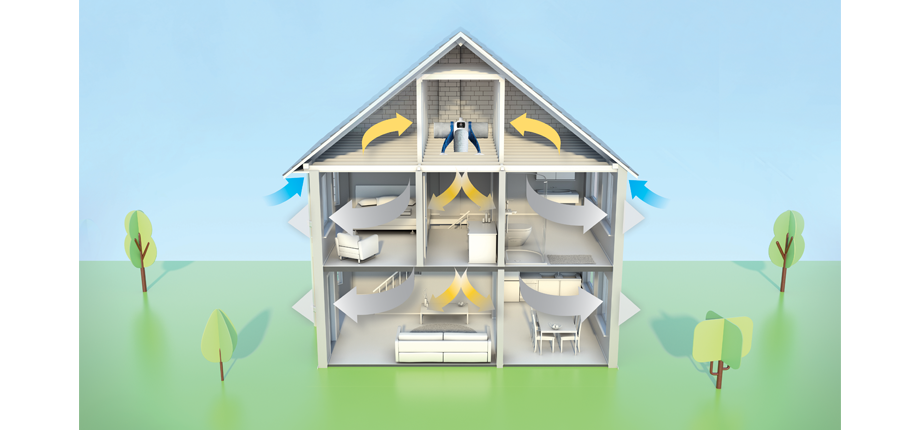Taking a holistic approach to building renovations could help social landlords both improve a property’s energy efficiency as well as its health. Tom Wodcke, Product Marketing Manager at Vent-Axia, discusses a new Government White Paper which offers recommendations on how to provide healthy homes

Healthy homes matter… A new White Paper Building our Future: Laying the Foundations for Healthy Homes and Buildings from the All Party Parliamentary Group (APPG) for Healthy Homes and Buildings looks at the detrimental impact poor quality buildings are having on health and wellbeing and makes far reaching recommendations on how this issue should be tackled. This should make interesting reading for landlords since these recommendations include a call for a holistic approach to building renovations so that, in addition to making homes more energy efficient, they also improve other elements vital for health and wellbeing including ventilation and air quality. With these recommendations in mind what practical steps can Housing Associations take to improve indoor air quality (IAQ) and help provide healthy homes for their residents?
Refurbishment
In recent years when undergoing social housing refurbishment programmes many landlords have aimed to improve the energy efficiency of homes by insulating them and making them more air tight. This has helped reduce bills and fuel poverty for residents. However, in some properties where ventilation has not been considered it has also resulted in poor IAQ.
Taking a holistic approach to social housing refurbishment means considering all the different elements such as ventilation, heating, energy efficiency, air quality, lighting and acoustics. For landlords this means it is essential to consider ventilation when increasing the airtightness of housing stock, to allow homes to breathe and moisture in the air to escape. If ventilation is not considered, and then upgraded if necessary, then air quality may deteriorate and condensation and mould may occur.
Continuous Ventilation
So, what is the solution? Continuous ventilation is a good option for landlords since it effectively improves indoor air quality and combats condensation and mould. Designed to work with the natural air infiltration of a building, continuous ventilation systems control the air path through the home. As a result, they prevent the migration of damaging humidity and pollutants, providing near silent energy efficient ventilation.
For refurbishment projects, there are a range of different continuous ventilation solutions available for landlords including: Positive Input Ventilation (PIV), such as the PoziDry Pro; filter-free extractor fans, such as the Lo-Carbon Revive; and decentralised Mechanical Extract Ventilation (dMEV), such as the Lo-Carbon Response. In addition, there are also dMEV single room heat recovery units available, such as Vent-Axia’s Lo-Carbon Tempra, which can be simply retrofitted through a 100mm diameter hole in the wall allowing standard wet room extract fans to be easily replaced.
All these technologies provide fresh air creating an environment in which mould and condensation find it hard to exist, resulting in a healthy indoor environment while ensuring the ventilation meets the needs of individual applications.
Communicate
Once a holistic property refurbishment is complete it is also important to communicate with residents to help ensure homes remain healthy. Housing Associations can make a big difference by advising residents on how to avoid condensation and mould and improve IAQ - for instance avoiding drying clothes on radiators, since this raises moisture levels and ensuring ventilation is operating effectively. Ventilation problems can occur which will negatively affect IAQ when windows and trickle vents are kept shut, passive vents are blocked or extractor fans are turned off due to noise or the perceived cost of running. Explaining to residents about the importance of IAQ can be very beneficial when it comes to maintaining a healthy home.
Whilst condensation and mould and the resulting poor IAQ can be an on-going issue in some homes, Housing Associations can rest easy in the knowledge that there are a range of options for tackling this. By taking a holistic approach to refurbishments the health of both residents and their homes are set to benefit.
- Log in to post comments













